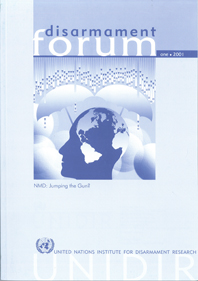While missile defences have a long and controversial history, the attention they have attracted over the last few years is not about to abate. Can missile defences actually work as advertised? Are such active defences an appropriate response to real or purported missile threats? What are their implications for the perennial "cornerstone" (or is it "sacred cow") of deterrence? Although these and similar questions have been raised in previous instalments of the missile defence debate (from the genesis of the ABM Treaty to GPALS via SDI), they now present themselves in a very different and complex international security environment and need revisiting.
As we go to press, the outcome of the United States presidential election is still unknown. Since President Clinton pushed the decision on NMD deployment to his successor, the incoming president will be making a decision with long-term and serious ramifications for arms control and disarmament. UNIDIR's natural point of interest, and the underlying common theme to the papers in this issue of Disarmament Forum, is the impact of missile defence plans, statements and deployments on prospects for arms control, non-proliferation and disarmament.
Citation: Kerstin Vignard (ed.) (2000). "Disarmament Forum: NMD - Jumping the Gun?", UNIDIR, Geneva.
Disponible aussi en français.
Content
- Editor’s note, Kerstin Vignard
- Current plans for missile defence, John Pike and Peter Voth
- National missile defences and arms control after Clinton’s NMD decision, Daryl G. Kimball and Stephen W. Young
- Fighting fire with fire: missiles against missiles, Christophe Carle
- Defence, deterrence and cultural lag, James M. Skelly
- Confidence-building measures related to the ABM defence problem, Viacheslav Abrosimov
- NMD Resource List, compiled by Derek Brown
